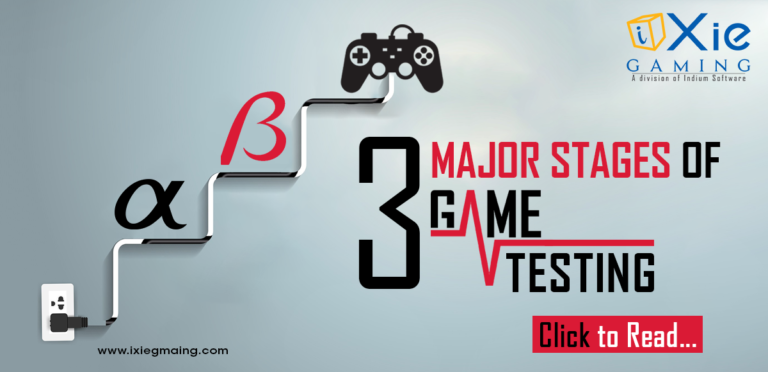Modern games have high-quality sounds, animations, and visuals. Also, they boast advanced capabilities, making them more complex to test. Manually testing such games can be time-consuming, delaying their release to the market. And that’s where video game test automation comes in handy. It allows you to automate various testing aspects, accelerating the process.
While game test automation has numerous benefits, it presents unique challenges compared to traditional software testing. Therefore, you must consider various factors before automating game tests. But what are some of these factors to consider before starting? Let’s find out.
Why Automate Video Game Testing?
Video game test automation can have several benefits. Some of these advantages include the following:
- Faster time-to-market. It allows you to run more tests in less time, accelerating the game testing and delivery process.
- Reduced development costs. Game test automation reduces the labor and hours required to run tests manually, cutting down costs related to testing and development.
- Increased consistency in the game. Unlike manual testing, automated game tests run automatically, provided that specific parameters are met. This ensures particular aspects of the game are tested, enhancing game consistency.
- Reusability of test scripts. Automated game test scripts can be reused in multiple instances. This minimizes redundancy and the time required to create new test scripts each time you build a game.
- Increased machine and tester efficiency. Video game test solutions optimize the use of resources, enhancing efficiency.
10 Factors to Consider Before Automating Video Game Testing
Here are some key factors to consider before implementing video game test automation:
1. Game Complexity
Video games come in different formats. Some can be simple, while others can be complex. Therefore, automating tests for these games will differ significantly based on the complexity level. The more sophisticated a game is, the more extensive your automation framework will need to be.
So, before integrating video game test automation, you must assess and determine its complexity. This will help you create an automation framework that suits your game’s complexity and requirements.

2. Automation Size
How many video game qa parts do you want to automate? The more testing aspects you want to automate, the more variables you need to consider. Note that game test automation necessitates a significant change in testing operations. Also, it’s a long-term investment – so don’t expect instant returns.
If you’re looking to automate numerous aspects of video game testing, consider delegating responsibilities to experienced test automation engineers. This will ensure you won’t compromise the project’s success.
In this case, you may need to consider a reputable independent software testing service provider. Such companies offer on-demand teams of experienced professionals capable of handling test automation procedures.
3. The Human Aspect
One of the key misconceptions about game test automation is that it eliminates the need for human testers. This is never the case because some game tests, such as playtesting and ad hoc, cannot be automated. However, it creates more room for manual testing of stability and usability, among other issues.
Therefore, as you think of automating video game testing, consider the human aspects. Have a team of experienced manual testers who will test the game aspects that cannot be automated.
4. Platform and Devices
The number of gaming platforms and devices has increased with time. Players can play games on PC, mobile, console, and virtual reality devices. This has made game test automation challenging as each platform demands different testing tools and approaches.
So, when thinking of game test automation, consider where your game will be played. This will help you plan your automation accordingly.
5. Tools and Frameworks
A solid automated game testing infrastructure is crucial to the success of your test automation project. This infrastructure should include the most appropriate automation tools and frameworks to ensure seamless game test automation.
Before integrating video game test automation, research and choose the right automation solutions. Be careful when selecting automation since some are designed for specific game platforms and engines.
Here are some popular automation tools for game testing:
- Unreal Automation Testing System
- Appium
- Unity Test Runner
6. Scripting Language
Game automation often involves creating scripts using specific programming languages. So, before automating game tests, determine the scripting language that best suits your needs. Some commonly used scripting languages include the following:
- JavaScript
- C#
- Python
Choose the most suitable scripting language based on the video game engine and platform.

7. Game Engine
Some games are built using a specific engine, like Unreal Engine and Unity. If this is the case, consider using plugins and tools designed for that engine. These tools offer better integration capabilities and support in-game components, streamlining test automation.
8. Continuous Integration
Integrate game test automation into your continuous integration/ continuous deployment (CI/CD) pipeline. This ensures that tests are run automatically after code changes. As a result, you can identify issues early in the development process.
9. Testing Scenarios
Before automating testing, it’s crucial to identify and prioritize the most critical game-testing scenarios. Consider the aspects that matter the most for your game’s functionality and user expectations. Common scenarios include UI testing, load testing, performance testing, and security testing. This will help you tailor your automation efforts to cover these scenarios comprehensively and ensure the game’s robustness, usability, and security under various conditions and user interactions.
10. Scalability
Your game testing needs will likely evolve with time. So, before creating a video game test automation framework, consider how it can scale as the game grows. Ensure the framework can handle large data sets, more complex scenarios, and increased test coverage. This will prevent you from creating a new game test automation framework in the future to accommodate growing testing needs.
Final Thoughts
Video game testing services can take your testing capabilities to the next level. It allows you to run automated tests, minimizing the dependency on manual testers. However, it doesn’t mean you do away with them. Instead, they work with automated testing frameworks to accelerate the process and enhance test coverage.
Unfortunately, starting game test automation can be a complex endeavor. But with careful planning and consideration of these factors, you can develop an efficient and effective game testing process, ensuring your game meets the desired quality standards.
Frequently Asked Questions:
Game Development is becoming increasingly complex. This also has the added effect of increasing the complexity of testing, in turn delaying the release of the game. Test Automation helps resolve this challenge by accelerating the testing process, which makes it very important to the gaming industry as a whole.
The main difference between the two testing methods is the speed of testing. Traditional testing methods are time-consuming while Video Game Test Automation helps speed up the process making it a boon for developers who need to meet tight deadlines and can’t afford delays.
Some of the key benefits are as follows:
(i). Faster time-to-market
(ii). Reduced development costs
(iii). Increased consistency in the game
(iv). Reusability of test scripts
(v). Increased machine and tester efficiency
Some of the popular tools for Game Test Automation are as follows:
(i). Unreal Automation Testing System
(ii). Appium
(iii). Unity Test Runner
In game development, a diverse range of tests can be automated. However, as game complexity increases, the automation framework must also become more intricate. To make the most of game test automation, testers should focus on automating critical aspects such as UI testing, load testing, performance testing, and security testing.






